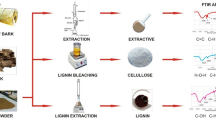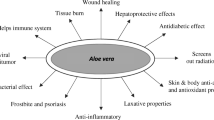Summary
From the ranks of the colourless hydroxyflavans, four differenthydroxyflavan-3-ols(catechins and epi-catechins), as well as eight hydroxyflavan-3,4-diols, have so far been encountered in nature. These substances are also procurable by synthesis. On treatment with hot water or dilute acids, they are easily converted into soluble tannins or insoluble phlobaphenes. The mechanism of the self-condensation is explained using catechin via the isolation of a dimerie product. A probable path for the self-condensation of the diols has been indicated. In contrast to the products of their self-condensation, the monomeric polyhydroxyflavans are not real tannins. A particular accumulation of phenolhydroxyl groups in the molecule, the tendency to form supersaturated solutions and low solubility in water in the — generally not attainable — crystalline state are prerequisites for tanning properties. In nature, the self-condensation of polyhydroxyflavans proceeds (e. g. in the wood ofAcacia catechu or in Quebracho Wood) without the assistance of enzymes. Dehydrogenative polymerisation occurs with formation of brown or red phlobaphenes (e.g. in cocoa beam) which are generally insoluble.
Similar content being viewed by others
References
K. Freudenberg undL. Purrmann, Liebigs Ann. Chem.431, 274 (1924). Seither sind viele weitere Vorkommen festgestellt worden. (—)-Epicatechin ist der Hauptbestandteil des alkoholisch-wässerigen Extraktes der Früchte von Crataegus oxyacantha (K. Freudenberg undK. Weinges, unveröffentlicht).
K. Freudenberg, Ber. dtsch. chem. Ges.53, 1416 (1920).
M. Tsujimura, Sci. Pap. Inst. phys. chem. Res., Tokyo10, 253 (1929);14, 63 (1930); siehe auchR. Yamamoto, J. agric. chem. Soc. Japan6, 564 (1930).
Y. Oshima, Bull. agric. chem. Soc. Japan15, 109 (1939).
W. Mayer undG. Bauni, Liebigs Ann. Chem.611, 264 (1958).
F. E. King, J. W. Clark-Lewis undW. F. Forbes, J. chem. Soc.1955, 2948.
D. G. Roux undA. E. Maihs, Nature182, 1798 (1958).
K. Freudenberg undP. Maitland, Liebigs Ann. Chem.510, 193 (1934).
K. Freudenberg undK. Weinges, Tetrahedron (1960), im Druck.
K. Freudenberg, Karimullah undG. Steinbrunn, Liebigs Ann. Chem.518, 37 (1935).
K. Freudenberg, H. Fikentscher, M. Harder undO. Schmidt, Liebigs Ann. Chem.444, 135 (1925).
K. Weinges, Liebigs Ann. Chem.615, 203 (1958).
F. E. King undW. Bottomley, J. chem. Soc.1954, 1399.
K. Freudenberg undD. G. Roux, Naturwiss.41, 450 (1954).
D. G. Roux undK. Freudenberg, Liebigs Ann. Chem.613, 56 (1958).
H. H. Keppler, J. chem. Soc.1957, 2721.
D. G. Roux, Chem. & Ind.1958, 161.
K. Freudenberg undK. Weinges, Angew. Chem.70, 51 (1958); Liebigs Ann. Chem.613, 61 (1958).
A. K. Ganguly undT. R. Seshadri, Tetrahedron6, 21 (1959).
K. Freudenberg undK. Weinges, unveröffentlicht; vgl.K. Weinges Liebigs Ann. Chem.627, 229 (1959).
A. K. Ganguly undT. R. Seshadri, J. sci. industr. Res. [B]17, 168 (1958).
A. K. Ganguly, T. R. Seshadri undP. Subramanian, Tetrahedron3, 225 (1958).
D. G. Roux, Nature183, 890 (1959).
K. Freudenberg,Die Chemie der natürlichen Gerbstoffe (Springer, Berlin 1920), S. 120.
K. Freudenberg undK. Weinges, Liebigs Ann. Chem.590, 140 (1954).
K. Freudenberg, J. H. Stocker undJ. Porter, Chem. Ber.90, 957 (1957).
K. Freudenberg undJ. M. Alonso, Liebigs Ann. Chem.612, 78 (1958); vgl.3.
W. Mayer undF. Merger, Chem. & Ind.1959, 486.
D. G. Roux, Vortrag vor «Phenol Group» London, 6. Januar 1959.
K. Freudenberg undK. Weinges, Chem. & Ind.1959, 486.
K. Freudenberg,Die Chemie der natürlichen Gerbstoffe (Springer, Berlin 1920), S. 7, 8.
E. C. Bate-Smith undT. Swain, Chem. & Ind.1953, 377.
K. Freudenberg, Nature183, 1152 (1959).
K. Freudenberg, Chem. Ber.92, LXXXIX (1959);K. Freudenberg undB. Lehmann, Chem. Ber., im Druck.
K. Freudenberg,Die Chemie der natürlichen Gerbstoffe (Springer, Berlin 1920), S. 2 und 22.
Vgl. auch:K. Freudenberg undK. Weinges inThe Flavonoids (herausgegeben vonT. A. Geissman, Pergamon Press), im Druck.
Author information
Authors and Affiliations
Rights and permissions
About this article
Cite this article
Freudenberg, K. Catechine und Hydroxy-flavandiole als Gerbstoffbildner. Experientia 16, 101–105 (1960). https://doi.org/10.1007/BF02158087
Published:
Issue Date:
DOI: https://doi.org/10.1007/BF02158087




